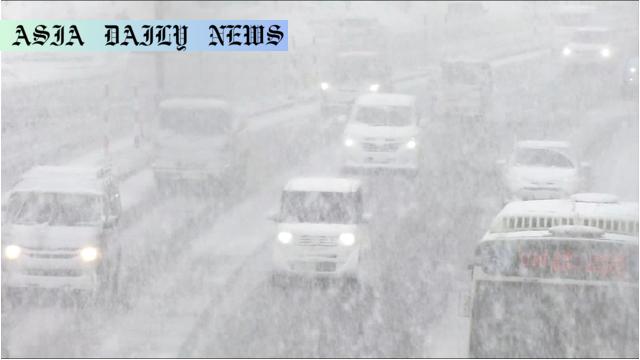Heavy Snow: A strong cold air mass is expected to bring significant snow to the Sea of Japan coast, causing transport disruptions and hazards.
Heavy snowfall forecasted along the Sea of Japan coast through Wednesday.
Snow accumulation of 40-70 cm expected in several regions, including Tohoku and Hokuriku.
Authorities warn of transport disruptions, avalanches, and power failures.
Earlier cold wave caused snow to exceed usual accumulation in mountainous regions.

Heavy Snowfall Expected Across Japan
A strong cold air mass coupled with a pronounced winter pressure pattern is expected to bring heavy snowfall along Japan’s Sea of Japan coast through Wednesday. This weather phenomenon is forecasted to significantly affect regions like Tohoku, Hokuriku, the Kanto-Koshin area, and parts of Gifu and Kinki Prefectures. The Meteorological Agency is urging residents and businesses to prepare for potential disruptions and ensure safety measures are in place.
Snow Accumulation Forecast
During a three-hour period on Monday until 6 p.m., approximately 10 cm of snow piled up in areas like Niigata, Aomori, and Nagano Prefectures. Projected snowfall for the next 24 hours indicates up to 70 cm in Tohoku, Hokuriku, and Niigata Prefectures. Other regions such as Kanto-Koshin and Gifu are expected to see 50 cm, while 40 cm is forecast for the Kinki area. These significant accumulations pose risks of collapsing structures, hazards to transportation infrastructure, and challenges for local services.
Impact of Previous Cold Waves
This winter has already seen unusually high snow accumulation in various mountainous areas due to earlier cold waves this month. These conditions have exacerbated risks of avalanches, falling trees, and transportation paralysis. Residents, particularly those in isolated communities or high-altitude regions, are encouraged to ensure sufficient supplies of food and energy.
Warnings on Potential Hazards
Authorities have issued several warnings in light of the expected snowfall. Transportation disruptions are highly likely, particularly for roadways and train services in affected areas. Additionally, the heavy snow increases risks of power outages due to the burden on electrical infrastructures, falling trees, and accidents. Avalanche warnings have also been issued, especially in mountainous regions where snowfall has consistently exceeded usual levels this season. Residents are advised to refrain from unnecessary travel and to monitor updates from local authorities.
Precautionary Measures for Residents
The Meteorological Agency has asked residents in affected areas to take necessary precautions. This includes clearing snow from rooftops to prevent structural damage, reinforcing winter gear for vehicles, as well as monitoring weather and avalanche alerts through official channels. Travelers planning to visit areas along the Sea of Japan coast should reconsider their travel plans during this period.
Weather Forecast Outlook
The current cold air mass dominating Japan is expected to persist throughout the week. However, it will gradually weaken by the weekend, allowing for clearer skies and milder conditions. In the meantime, vigilance and preparedness remain crucial as this severe weather pattern threatens to strain transportation systems, power supply infrastructures, and public safety in multiple regions.
Commentary
The Challenges of Heavy Snowfall in Japan
The latest forecast of heavy snow along the Sea of Japan coast is a stark reminder of the challenges posed by severe winter conditions. While the picturesque white landscape might attract tourists and skiers, the toll it takes on daily life in the affected regions cannot be understated. Transportation systems, already struggling from earlier snowfalls this month, are likely to face further disruptions, complicating the lives of commuters and delivery networks.
The Vulnerability of Infrastructure
With forecasts predicting up to 70 centimeters of snow in some areas, infrastructure is bound to be severely impacted. Snow loads can compromise the structural integrity of older buildings, and power lines are at higher risk of failure. These challenges highlight the need for robust winter preparedness measures and investments in weather-resilient infrastructure for such regions. Communities often stand resilient in times of such adversity, but the continuous impact of such extreme weather is a reminder for policymakers to prioritize disaster readiness.
Importance of Vigilance
Warnings of avalanches and falling trees are particularly alarming for residents in mountainous areas. While urbanized regions benefit from relatively swift responses from local authorities, remote communities can face delays in receiving aid. In these times, local cooperation and individual preparedness can go a long way in ensuring safety and minimizing potential losses.
Overall, the current weather conditions underscore the delicate balance between appreciating winter’s natural beauty and grappling with its challenges. By staying informed and taking proactive measures, both residents and authorities can weather the storm together.


